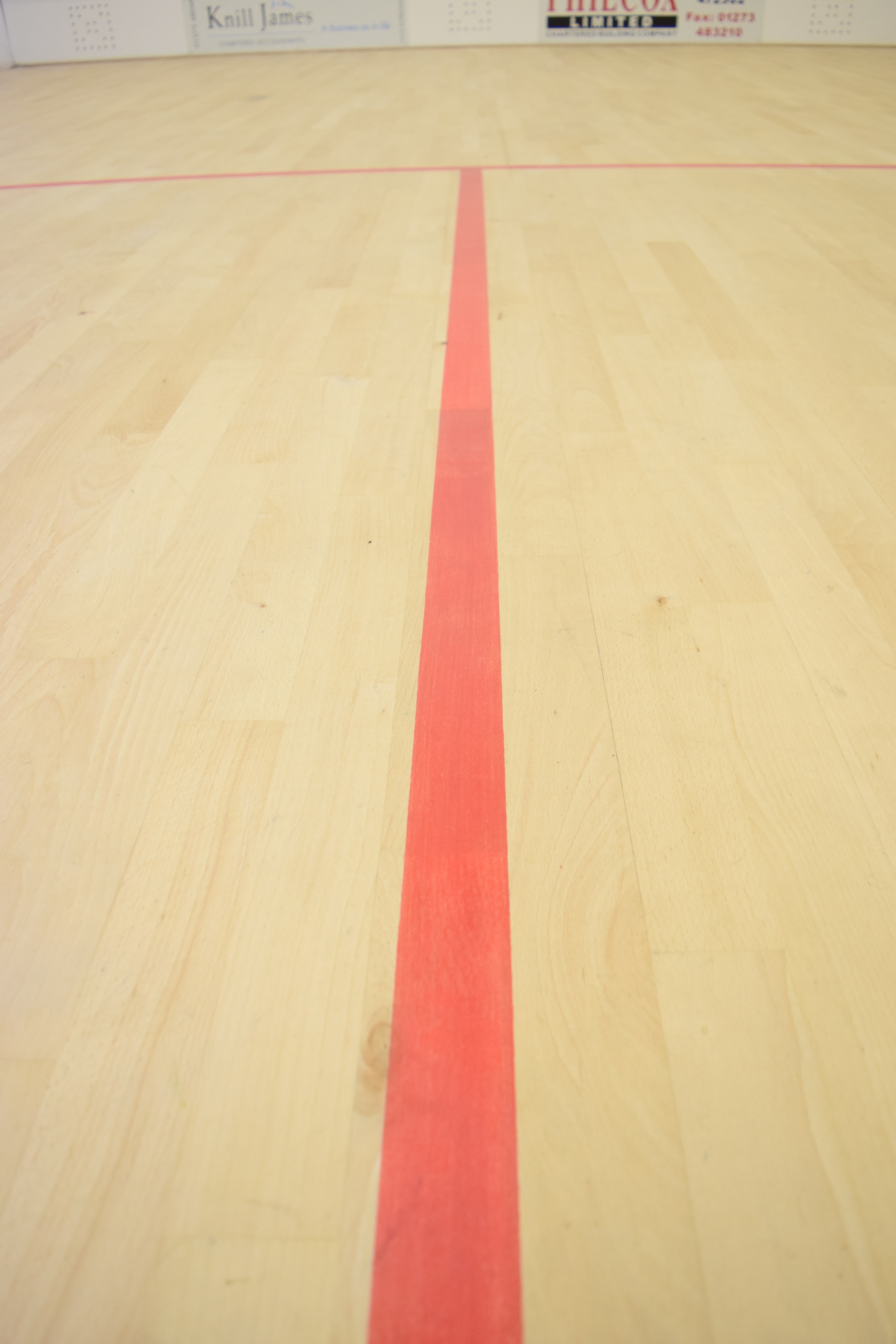If you never leave the T-Position how will your opponent get you off it?
When playing squash, if you’re not careful it’s very easy to get dragged around and made to run all over the court like a headless chicken. Once you start sprinting around, it’s very hard to stop as you’ll typically be rushing your shots or playing weaker shots as a result of all the running you’re doing, which only makes things worse and leads to more running if not the end of the rally.
Minimising the amount of time you’re off the T
The idea is to reduce the time you spend away from the T-Position as much as possible. The more time you spend on the T-Position with and without the ball, the better your chance of winning.
Consequently, whenever you’re moving around the court or playing a shot, you should seek to stay as close as you can to the T-Line. When I say the ’T-Line’, what I mean is the vertical line that starts with the T-Position and carries onto the back of the court. The T-Line also includes an imaginary line that would go from the T-Position all the way to the front wall if the previously mentioned vertical line carried on going. If you stay near the line, it will always be a shorter journey back to the T-Position.
There are numerous benefits to being able to play your shots from the ’T-Line’ or as close to it as possible. Of course you will have to leave the line and at times you will have to abandon it completely but if you strive to stay as close to it as possible at all times, you’ll find your game will improve positionally, tactically, physically and technically.
If you hold the T-Line or stay close to it, you will be very difficult to dislodge from the T-Position as you will spend more and more time there, as you will either be on it or very close by and so able to recover to the middle quickly. This will leave fewer gaps for your opponent to hit the ball into. This is really important, as the less time to you are away from the T-Position, the harder it will be take make you run. You need to minimise the time you spend away from the T-area to be successful.
The psychological T
The mental aspect of being in the vicinity of the ’T-Line’ should not be underestimated either. Seeing your opponent hold the central areas of the court no matter what you throw at them is incredibly disconcerting and can lead players to getting frustrated, which in turn leads to errors and poor judgement. Secondly, you will also save energy over the course of the game as you will be moving that bit less with every shot, which could make a big difference in the later stages of the game.
Thirdly, from a technical point of view, you will also always have sufficient space to play your shots and swing properly and won’t get caught out getting to close and therefore hindering the quality of your shot.
Keep an eye on how much you leave the ’T-Line’ when playing your shots and ask yourself if you could be closer to the centre. The most common time people leave the ’T-Line’ more than necessary is whilst exchanging length shots with their opponent. The best mover of all time in my opinion was Jansher Khan. Just watch the way he moves and how economic he is.
See if you can’t trim a few steps off your shots and reap all of the aforementioned benefits and more.


Leave a Reply